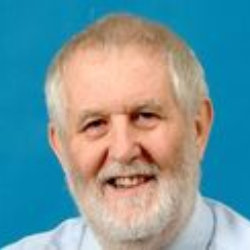ROGER SCOTT. All creatures great and small: parity or esteem?
November 17, 2018
The festive campaigning season is upon us and the federal Minister for Education wishes to bring gifts to those small tertiary institutions located in sensitive rural constituencies. Unfortunately for those who live in the greater (ie research-intensive) metropolitan institutions the Minister seems to have been told that the load capacity of Santas sleigh is finite. The university system as a whole does not rank high enough politically to get a bigger slice of the Christmas pie so the elves need to help the Minister make do with what he has.
One of my mentors once wrote a dreadful book called Parity of Esteem. He was accidentally appointed as the inaugural Principal of the Canberra CAE, after applying for a lesser position in Administrative Studies based on his leadership experience in Nigeria and at the University of Mauritius. Sam Richardsons title referenced the underlying aim behind the creation of a binary system in the 1964 Martin Report. This was designed to meet burgeoning demand for tertiary qualifications by re-branding existing teachers colleges and institutes of technology as Colleges of Advanced Education.
At the time and subsequently, nobody in the business believed that there would actually be parity but it was a political convenience, particularly in non-metropolitan locations. Staff there had been pressing their MPs for the prestige and commercial benefits of joining a network of CAEs which included major metropolitan players like RMIT. CAEs offered exciting job opportunities in an era of reduced job openings in existing universities and staff built reputations based on the quality of their vocationally-focussed offerings.
The arrival of John Dawkins in 1987 changed the world of everyone in the tertiary sector who was not insulated in tenured research-based occupations. All over regional Australia, small CAEs scrambled to gain university status by meeting the size and diversity requirements specified in the Dawkins reforms, sometimes by becoming subordinated components of existing established universities or by merging together. The same dogma of ‘parity of esteem’ was propounded, especially in non-metropolitan areas where a mere CAE had been transformed into a ‘real’ university. Places like Wagga, Albury, Ballarat, Lismore, Rockhampton and Toowoomba never had it so good.
Over time, the empire fought back. Some incorporated these new institutions into their own framework, particularly in Victoria, but predictably the differentiation by hierarchy soon emerged. A hierarchy already existed within the CAE system (technology v teacher education) and this now accelerated. The new talisman became research intensity. Several groupings emerged instead of a duality but there was a clear ’top rank’ in which emphasis on research combined with historical pre-eminence to provide an elite Group of Eight. Even though access to research funding was notionally democratised, the Group tended to dominate across the board and success generated its own constantly incremental rewards.
Meanwhile back on the farm there were problems caused by a loss of competitive advantage, particularly as the major source of financial expansion moved from local undergraduates to international students. The Group of Eight and most other universities were already using cheap mass-enrolled courses in social sciences, especially management and law, to subsidise both more expensive science courses and independently-funded research. The desire to enjoy the benefits of international enrolments meant that the ex-CAEs couldnt be kept down on the farm, any more than most of the farmhands. For example, institutions like the University of Southern Queensland in Toowoomba moved teaching closer towards central Brisbane, and Central Queensland University exploded out of Rockhampton into a dazzling array of metropolitan locations.
It is the potential problem of increasingly derelict campuses and thus political blame-allocation which seems to lie behind the aim of throwing buckets of money in the direction of those country institutions at the bottom of the status hierarchy. Filling those buckets from the large numbers of dollars currently focussed on research and on the Group of Eight universities which are most active in this area is the root cause of concern articulated in the press.
And research is now seen as a political target by proclaiming a new essentially political criterion ‘public interest’ - as a back-up to the recent ad hoc intervention by the Minister in the governments own evaluation process. Perhaps he is assuming that the sort of people who value tertiary institutions in places like Toowoomba and Rockhampton are foot-soldiers in the culture wars and sceptical of the benefits of research. As Sir Humphrey was wont to say, that would be a courageous decision.
Roger Scott is an Emeritus Professor in the Centre for Policy Futures, the University of Queensland. He was Director-General of the Queensland Education Department and inaugural Vice-Chancellor of the University of Canberra.
